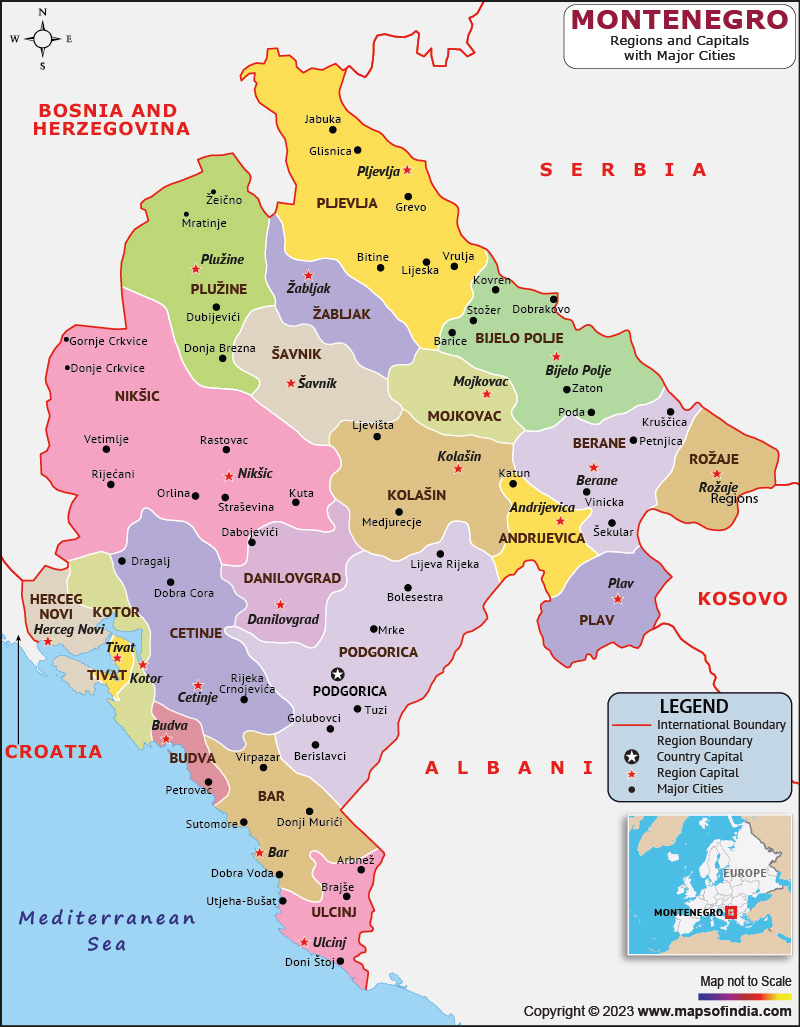Montenegro is a small Balkan nation situated in Southeastern Europe, bordered by Kosovo, Croatia, Serbia, and Albania. The country has a rich history and diverse culture, with beautiful natural scenery that attracts tourists from all over the world.
History
Montenegro's history dates back to ancient times when it was inhabited by Illyrian tribes. In the 9th century, it became part of the Byzantine Empire, and later the Kingdom of Serbia. In the 14th century, it became an independent state under the rule of the House of Balšić, and later, the House of Crnojević.
In the 15th century, Montenegro was conquered by the Ottoman Empire, and for the next 500 years, it was under Ottoman rule. In the 19th century, Montenegro gained its independence and became a principality. During World War I, Montenegro was occupied by Austria-Hungary, and after the war, it became a part of the Kingdom of Serbs, Croats, and Slovenes.
During World War II, Montenegro was occupied by Italy and later by Germany. After the war, it became a part of the Socialist Federal Republic of Yugoslavia. In 2006, Montenegro gained its independence from Serbia and became a sovereign state.
Culture
Montenegro has a rich and diverse culture, influenced by its history and geography. The country has a mix of Mediterranean and Balkan cultures, with a strong emphasis on family and community. Montenegro is known for its traditional music, dance, and cuisine, which features a variety of seafood, meat, and vegetables.
The country celebrates a number of festivals and events throughout the year, including the Kotor Carnival, the Herceg Novi Film Festival, and the Podgorica Cultural Summer. Montenegro is also home to a number of museums, including the National Museum of Montenegro, which showcases the country's history and culture.
Language
The primary language of Montenegro is Montenegrin, which is similar to Serbian, Croatian, and Bosnian. Serbian and Albanian are also commonly spoken in the country, particularly in areas near the border.
Geography
The country has a Mediterranean climate along the coast, with hot summers and mild winters, while the inland regions have a continental climate with cold winters and hot summers. Montenegro is known for its beautiful natural scenery, including the Tara River Canyon, which is the second deepest canyon in the world.
| Official Name | Montenegro |
| Capital | Podgorica |
| Population | 604966 |
| Area | 13,812 km2 |
| Currency | Euro |
| Religion | Christianity |
| Language | Montenegrin |
| Major Cities | Budva, Herceg Novi, Ulcinj |
FAQs
Q1: Is Montenegro home to the world's second-deepest canyon?
Yes, Montenegro is home to the Tara River Canyon, which is the second deepest canyon in the world after the Grand Canyon. It is a popular destination for adventure tourism, including rafting and zip-lining.
Q2: Is Montenegro known for its wine production?
Yes, Montenegro has a long tradition of wine production, particularly in the regions of Lake Skadar and the coastal areas.
Q3: Does Montenegro have a UNESCO World Heritage site?
Yes, Montenegro has two UNESCO World Heritage sites: the old town of Kotor and the Durmitor National Park.
Q4: Is Montenegro a popular destination for filming movies?
Yes, Montenegro is becoming an increasingly popular destination for filming movies and TV series due to its picturesque scenery and diverse locations.
Last Updated on: May 02, 2023
